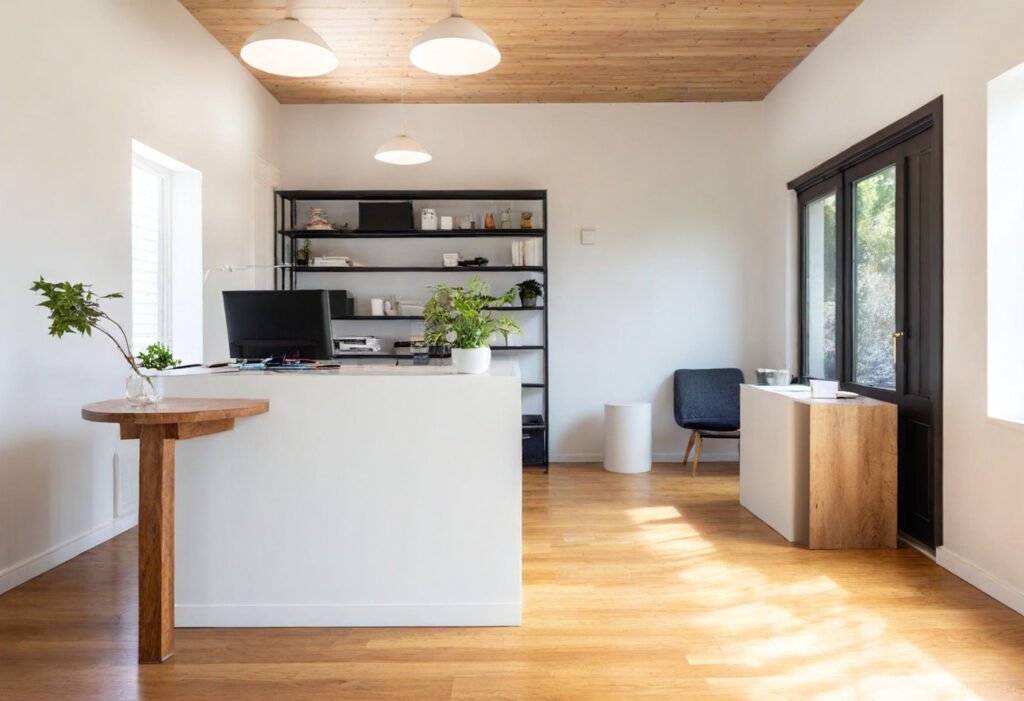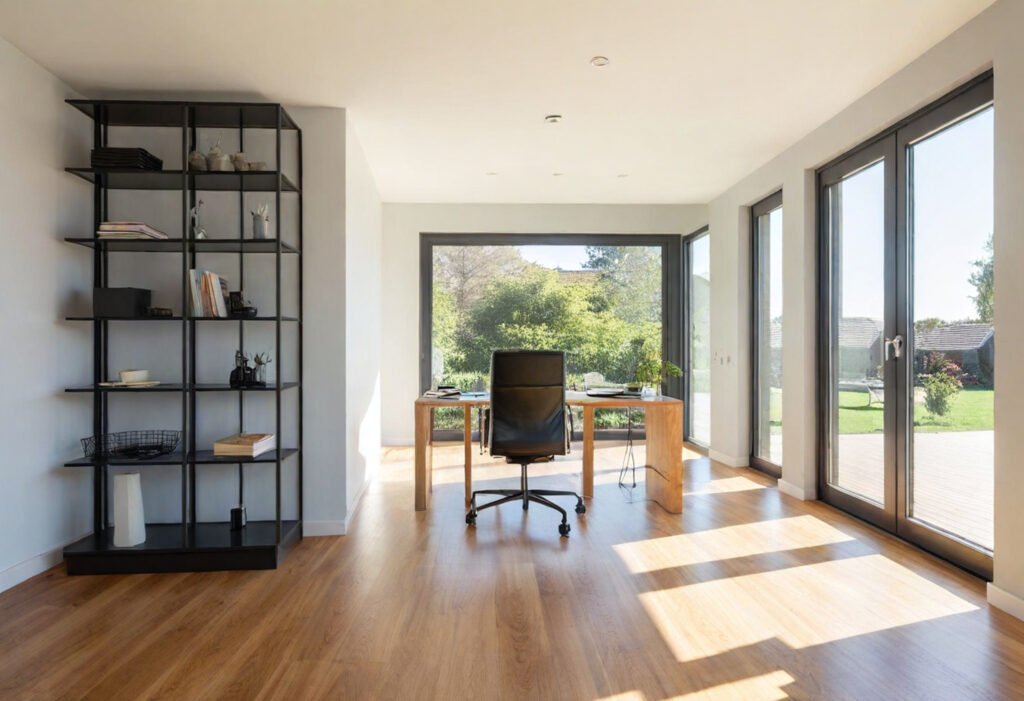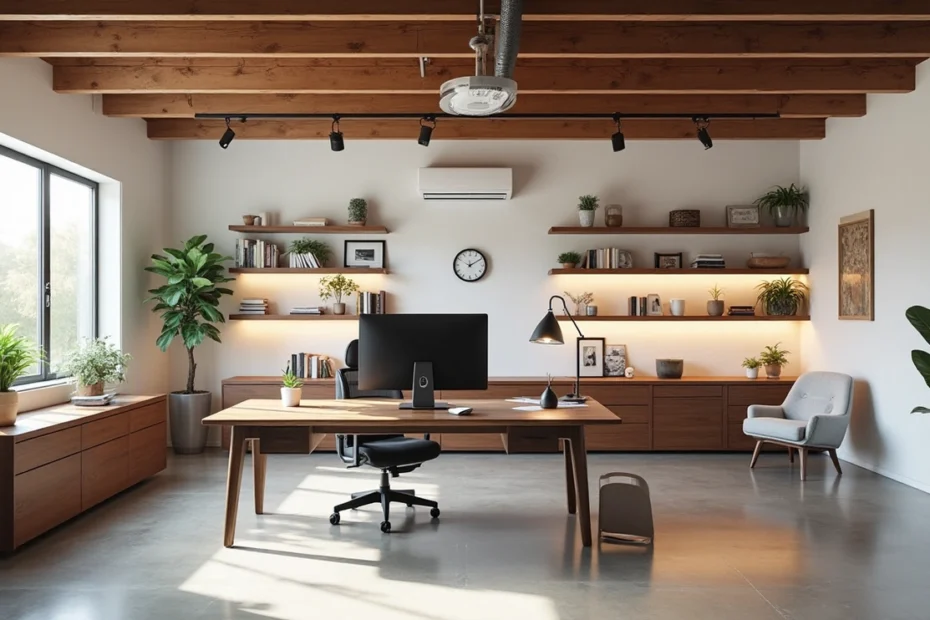My garage to office conversion trip started during the pandemic, at the time working from home became the new normal. The kitchen table became a battleground, and my productivity suffered from constant family distractions. I needed a dedicated workspace badly.
The garage office conversion proved to be a smart choice, both practical and financial. My new office space created the perfect barrier between work and home life. The project increased my home’s resale value by a lot. The conversion cost between $2,000 and $6,800, but quality materials made this investment worth every penny. The new office space brought an unexpected bonus – I could work without household interruptions.
In this piece, I want to share my experience after completing my dream workspace. You’ll learn everything from original planning to surprise challenges and the final touches that transformed the space.
What Inspired Me to Start the Garage Office Conversion
My decision to revolutionize my unused garage space into a home office came after months of frustration. The work situation had become unbearable. Looking back, this home improvement project turned out to be one of my best decisions.
The challenges of working from the kitchen table
The kitchen table workspace quickly became a problem. My professional and personal life blended completely, and I couldn’t tell when work ended and home life began. Household chores became constant distractions. I found myself prepping meals or doing laundry during work hours, which meant catching up on work tasks late at night.
The kitchen table setup created mental challenges, too:
- A lack of dedicated workspace made staying motivated harder throughout the day
- My family members walked through my “office” space and interrupted my calls and focus
- My laptop’s presence during family meals became a constant work reminder that made it impossible to disconnect
The kitchen table wasn’t suited for long-term use ergonomically. Research shows that proper ergonomics are vital as more workers switch to permanent remote work. Conservative estimates suggest that at least 35% of desk workers will work remotely permanently.
Why the garage felt like the right space
The garage conversion seemed perfect after I researched my options. This space offered what I needed most—a quiet spot away from household distractions. The separation created a mental boundary between work and home life, which is a vital part of increasing efficiency.
The garage space had several key advantages:
The space provided real privacy, completely separate from my home’s main living areas. Recent data shows that almost half of homeowners have thought about converting their garages into more functional spaces. About twenty percent have already completed such conversions, which showed me others saw this potential, too.
The garage was an existing structure that could become an office more cheaply than building an addition. The space existed already—it just needed some updates.
Original concerns and hesitations
Despite that, I had doubts about converting my garage into an office. Storage space loss worried me, and I wondered if the garage conversion meant giving up too much utility. Losing a parking space concerned me too, especially during bad weather.
Beyond these practical issues, I questioned whether the space could stay comfortable year-round with temperature changes. On top of that, I worried about permits and zoning requirements that could make the project complex.
These concerns existed, but the idea of having my workspace outside the main living area ended up being too good to pass up.
Planning the Space: Lessons I Learned Early On

My garage office conversion project needed solid planning to succeed. Before making changes, I had to get a full picture of what I was working with.
Measuring and visualizing the layout
The first step was measuring my garage space precisely. Getting the right dimensions—length, width, and height—was vital to plan furniture placement and use every square foot well. A typical single-car garage gives you about 200 square feet of space to work with. I drew a detailed floor plan that showed me where my desk, chair, and storage would fit without making things feel tight.
Dealing with insulation and temperature control
The most important part of turning my garage into an office was insulation. Regular garages don’t have much insulation, which makes them uncomfortable throughout the year. Good insulation gives you several benefits:
- Year-round comfort with better temperature control
- Lower energy bills through better efficiency
- A quieter space to work in
Spray foam insulation for walls and ceiling was my choice. It costs between $500-$1,500 based on garage size. This money reshaped the scene from an unusable space into a comfortable office.
Choosing the right flooring for comfort and style
My concrete garage floor needed work. After looking at different options, I focused on:
Vinyl flooring worked best because it’s durable, handles water well, and feels good to walk on. Installation costs ran $300-$1,000, making it the best value compared to epoxy, carpet tiles, or laminate.
Lighting decisions that made a big difference
Good lighting turned my dark garage into a space that boosted productivity. My setup included:
- Recessed ceiling lights for modern overhead lighting
- Task lights near the desk help my eyes
- Natural light, wherever possible
Based on workspace lighting guidelines, I put about 300 lumens per square foot in my work area and 60 lumens everywhere else. These lighting choices made a huge difference in both how much I got done and how I felt.
Unexpected Challenges During the Garage Office Build
My garage-to-office conversion project showed some unexpected challenges that tested my patience and problem-solving skills. What looked simple on paper turned into something much more complex when I started the actual work.
Wi-Fi connectivity issues and how I solved them
My garage’s thick concrete walls created a major tech challenge I hadn’t predicted. The wireless signal couldn’t get through these barriers, which made video calls almost impossible in my new workspace. I looked into several options and put together a solution that worked:
- Installing a WiFi booster near the garage to increase the existing signal
- Setting up an old router as an access point (a budget-friendly approach)
- Placing the equipment strategically for the best line-of-sight
This combination finally gave me the reliable connection I needed for work, after lots of trial and error.
Permits and zoning surprises
The biggest headache came from dealing with local building regulations. I found out that my garage conversion needed several permits I hadn’t planned for in my timeline or budget. The permit fees alone cost between $1,000 and $3,000, based on how complex the conversion was.
Skipping permits wasn’t an option because unpermitted work could lead to:
- Possible fines and legal issues
- Having to undo finished work if it didn’t meet the code
- Insurance companies are refusing to cover unpermitted areas
The permit process needed multiple inspections during construction to make sure everything met building codes.
Budget creep and how I adjusted
My careful budget planning fell short quickly. I had to make several changes to keep the project financially viable. The most important thing I learned was that garage conversion projects need at least a 20% buffer above the projected budget for surprise expenses.
The budget grew because of electrical upgrades, extra insulation requirements, and permit costs. I handled this by focusing on the must-have elements and leaving the cosmetic improvements for later. I also looked for cheaper alternatives for certain materials without cutting corners on quality or safety requirements.
Final Touches That Made It Feel Like a Dream Workspace

My garage-to-office conversion project came alive with the final touches. These details turned a simple workspace into something special. I wanted to create a space that would get my creative juices flowing and help me stay productive.
Furniture choices that boosted productivity
The right furniture made a significant difference in my garage office conversion. My investment in an ergonomic chair with proper lumbar support and adjustable height made a huge difference – no more back pain during long work sessions. The height-adjustable desk became a total game-changer. It let me switch between sitting and standing throughout the day, which did wonders for my posture and energy levels.
Storage quickly became a priority. The built-in shelving I installed had both open shelves for easy-to-grab items and closed cabinets that kept the mess hidden. This setup kept everything tidy and gave me space to display books and decorative pieces that sparked inspiration.
Decor and personalization tips
Personal touches made this converted garage feel like my own space. The color scheme had to energize me without being overwhelming. I picked a green-gray shade for the walls that created just the right peaceful vibe for focused work. A statement wallpaper in one corner defined my cozy reading nook and pulled all the room’s colors together beautifully.
The lighting setup included multiple sources – a ceiling fixture, a desk lamp, and a floor lamp. These layers helped prevent eye strain and improved the room’s atmosphere. On top of that, the plants and natural textures from baskets added warmth to what used to be a cold garage space.
Creating a separation between work and home life
The garage office gave me a vital boundary between work and personal life. This physical separation let me “go to work” and “come home” without leaving my property. This difference helped me maintain a healthy work-life balance.
Simple rituals reinforced this separation. I close the office door and power down my work devices at day’s end. My family knows my specific work hours and respects these boundaries. So now I can completely disconnect after work – something I couldn’t do when my office was at the kitchen table.
These final touches turned a simple converted space into my dream workspace that improved both my productivity and well-being.
Conclusion
Final Thoughts on My Garage Office Experience
Converting my garage into a home office ranks among my best home improvement decisions. I started working from my kitchen table as a quick fix. Remote work became a permanent part of my life, and I needed a space that truly helped me stay productive and healthy.
The challenges tested my patience along the way. WiFi problems popped up out of nowhere. The maze of permits and zoning rules stretched my budget and problem-solving skills to the limit. Despite that, each roadblock ended up leading to better solutions that improved the final result.
The biggest win has been getting my work-life boundaries back. A few steps across the yard let me “leave work” at the end of each day. This physical gap has boosted my work output and helps me stay focused on family time afterward.
My advice to anyone thinking about a garage conversion? Plan everything carefully. Double-check your measurements, get good insulation, and add 20% to your original budget for surprises. The process needs patience and flexibility, but having your own customized workspace makes it worth the effort.
My garage-turned-office has grown into something special – a place where ideas flow and work gets done. If your current work-from-home setup mixes up your professional and personal life too much, a garage office might be just what you need
